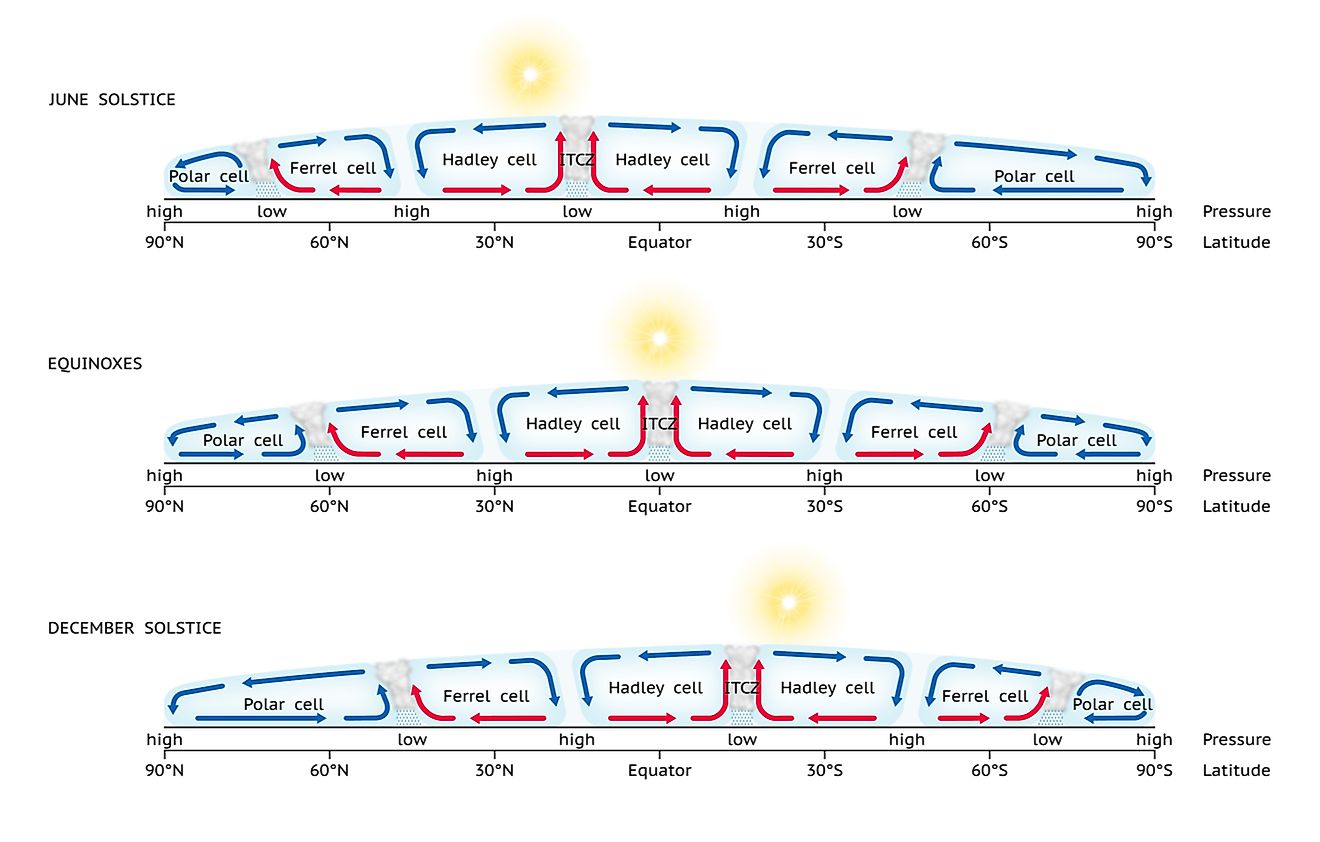What and Where Is The Intertropical Convergence Zone?

The Intertropical Convergence Zone is commonly known as the ITCZ. It is also called Equatorial Convergence Zone (ECZ) or Intertropical Front. The Intertropical Convergence Zone refers to a belt that is characterized by a belt of low pressure where the trade winds of the Northern and Southern Hemispheres come together encircling the earth, generally near the equator. The belt is mostly characterized by vigorous thunderstorms over broad areas due to convective activity. The position of the ITCZ varies with different seasons. Thermal energy characterizes the weather in this region from within the earth’s core and from the sun. This zone receives the highest amount of heat from the sun. This phenomenon happens around June 20th when the sun is overhead the Tropic of Cancer at 23½ degrees North and around December 20th when the sun is overhead the Tropic of Capricorn at 23½ degrees south.
Characteristics of The Intertropical Convergence Zone
Low air pressure mostly characterizes the ITCZ. The northern and the southern trade winds converge at the ITCZ and to due to Earth’s rotation, the winds lose energy as they cross the equator. The heat from the ocean currents makes the air warm at the Earth’s surface creating a region of low pressure. Another characteristic of the ITCZ is humidity. Since the air in this belt keeps rising frequently, it condenses in the atmosphere to form clouds. The belt receives afternoon showers due to high humidity. Sailors refer to the Intertropical Convergence Zone as doldrums because the belt lacks horizontal air movement since the warm air simply rises.
The ITCZ is not static, in that inconsistent location around the equator characterizes it. Different places receive varying heat energy amounts as the earth rotates with the seasons. This movement can result into a complete reversal of regular trade winds, especially in the Indian Ocean. The last characteristic of the ITCZ is that it experiences storms. The rainfall received in this area is not gentle rainfall and is characterized by thunderstorms.
Effects of The Intertropical Convergence Zone
Due to the above characteristics of The Intertropical Convergence Zone, the ITCZ has a significant impact on the weather all around the world. The ITCZ can cause shifting of wind patterns which results to moving thermal energy and moisture to different parts of the globe. The ITCZ can also result in the slowing of ocean currents and even stopping ocean currents.
Since ecosystems are dependent mainly on weather patterns and temperature, shifts in weather affect animal and plant life directly or indirectly.
According to scientists, the ITCZ is the wettest zone on earth since it receives precipitation up to 200 days in a single year. Due to the storms collected in this area, it makes it hard for aircraft to fly over the zone and also for a ship to sail through. An example is an aircraft, Air of France Flight 447 which crashed with no survivors in the region due to thunderstorms.











